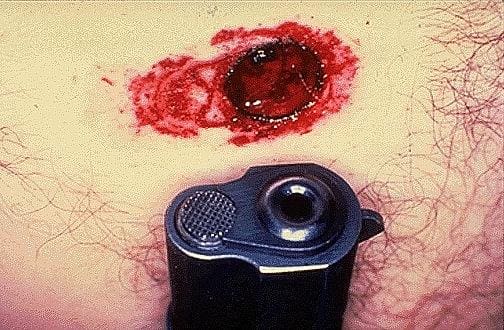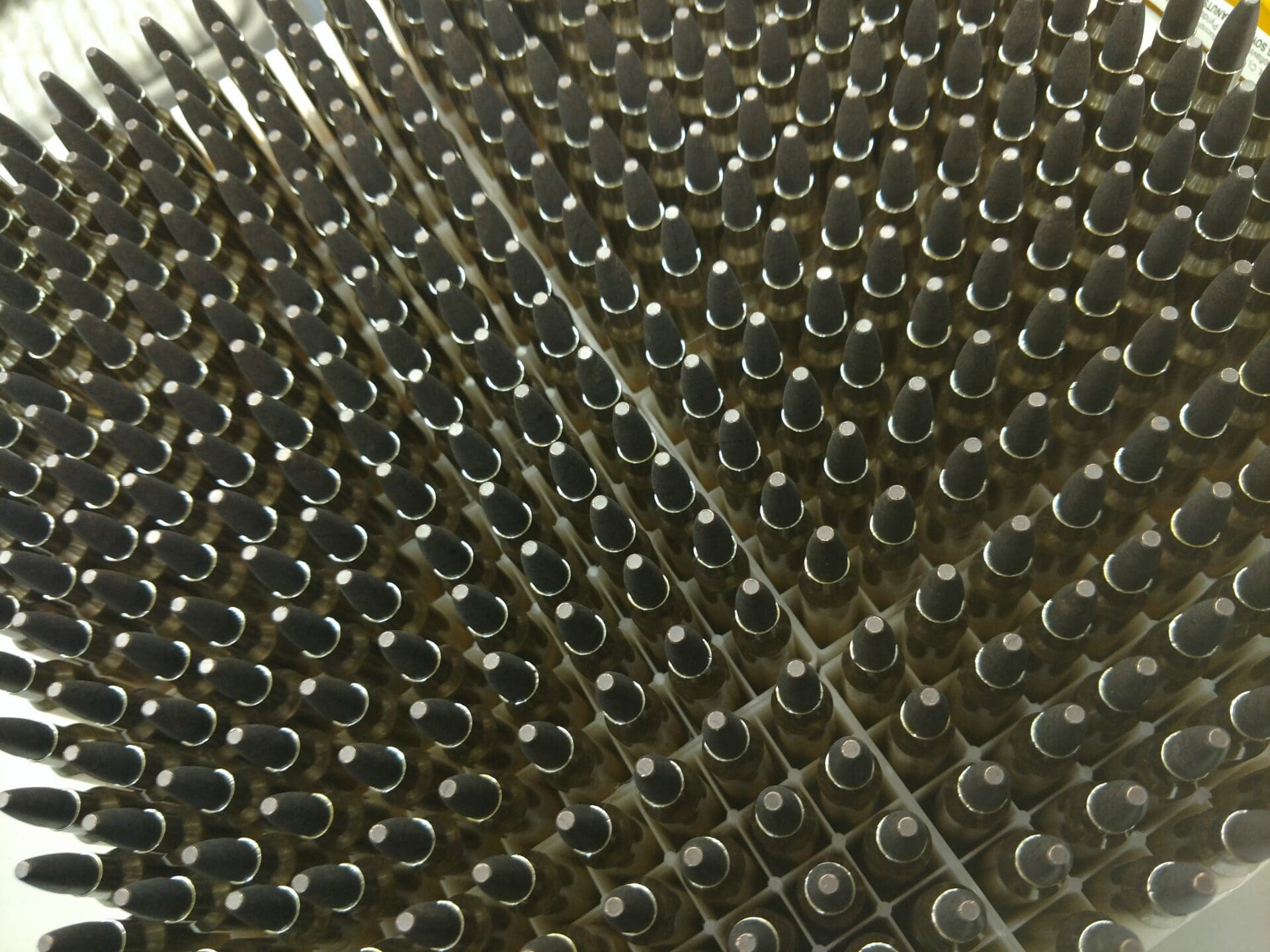The Brits have a retort for someone who asks a question with so many unquantified variables that the query is pretty much unanswerable: how long is a piece of string? There’s your answer to the question posed by NRA gun scribe B. Gil Horman at americanrifleman.org: “Will someone, either a self-defender or an assailant, be able to keep moving or fighting after being struck by a handgun bullet?” Mr. Horman strings his readers along for a fair few paragraphs, describing the main factors that apply (e.g. the bullet, the perp, luck). At the end of the metaphorical day, Horman concludes “I never want to find out.” That makes one of us, at least in theory. I’d like to know the odds of both myself and the bad guy carrying on after a bullet strike or strikes. And while I practice weak hand shooting, can you train for pain, mentally or physically?





Spend more time with the Ex-wife?
You won’t know unless it actually happens to you. Personally, I also hope to never find out. Although I’d like to think that the training I have would up the odds in my favor over your typical perp.
Check out the FBI Ballistic Research Unit review of shooting in Philly. Bad actor was shot 17 times .40 and .223 and continued to fight. Fight went on for 3 and a half minutes. He quit when he ran out of ammo. He even reloaded his mag from loose ammo. Had to be wrestled to the ground when the shooting stopped. His right arm and left foot were shattered by hits but he kept fighting with what did work. Eventually bled out but fought till the end. TOX SCREEN WAS CLEAN! He had no stimulants in his system. He was determined to not go back to jail. So the answer is if there are no CNS hits that stop motor function, a human is very capable of continuing the fight long after being shot multiple times.
Most people would be astonished to know the conditions some of my West Chicago patients are in when we get to them.
I’ve seen multiple GSW and the patient still alert and oriented. I have also seen an arm superficial GSW and the patient died from blood loss. There are a ton of factors that go into this.
If any one is truly interested on this I’m sure I could arrange an overnight ride along. Just remember it’ll be in the fantastic city of Chicago, so no CCW. (yet…)
I have heard from someone who attended the class, that a certain very well known instructor would allow students who agreed to engage a target after they’d been hit with a stun gun.
The idea was to simulate, a little, the pain and shock of being hit during a fight.
The students were closely supervised, with instructors right there with them. The students had to sign all sorts of waivers, and the shocking of the student went like this.
The student would be hit with a stun gun in the back of the leg, which typically hurt and put the student onto his knees. Immediately after being zapped, the student’s drill was to draw and shoot the target in front of him as quickly as he could, while maintaining proper technique and safety–not covering his own body with the muzzle, not covering anyone else on the range, etc.
That sounds interesting…if they were using paintball guns or AirSoft firearms. Not sure I’d wanna be within 2 miles of that drill if they were using live ammo.
Ask Fitty Cent.
I’ll see your fitty-cent and raise you one Plaxico Burress.
I worked nights in an inner city hospital ER and we had gunshot victims (not sure if “victim” is the best choice of words) come in all the time. I would say maybe half of them were not exhibiting symptoms of someone who had been shot. I saw plenty of them walk to a treatment room with no help, refuse pain meds and appear very calm when I interviewed them.
These little gang bangers all were using 9mm FMJ ammo so I think that had something to do with it. A lot of pass through wounds.
I guess it depends on what caliber you get shot with and where you get hit. If you get shot with a 22 you’ll most likely live, and you should make it if you get shot with a 9mm(most gang bangers do). Now if you get shot with a 45 your pretty much screwed, and you got no chance against the 50(unless your guardian angel is watching over you that day).
From what I hear, .22s can be nasty because it is fairly easy for them to ricochet of bone or other hard things. One example I heard was that if you took a .22 to the chest, it would just start bouncing around off your ribcage. Contrast this with a through and through with 9mm ball ammo.
“Contrast this with a through and through with 9mm ball ammo.”
I don’t know anyone who would use FMJ or any ball ammo for protection. My rounds are all hollow and mushroom pretty nasty-like in the body or any liquid(if you wanna see what it looks like don’t – shooting at water will hurt soon enough). My other rounds tear apart once they hit the body and head off on their own course. Most of the ammo I have (as far as research shows) tend to smash up and flatten more if they hit something hard.
Don’t know how accurate that is Joe. The thug gun of choice around here is the 45 and I get to the patients while they are alive more often than not. I’ve been told by the LEO’s that most of the ammo is the cheapest they can get/steal/buy. I’m sure they think larger bullet = instant death, I’m definitely in the camp of better placed hits = safe me and family.
Some of my buddies and I have a running joke that basically goes like this; you want to clean up the streets of Chicago? Give away free range instruction to all the gang bangers. After a week when they realize they are actually hitting who they are aiming at (other gang bangers) they will all go back to good old knuckles and knives.
Fire medic is correct about the 45, I didn’t mean that they would all die but they usually end up with more serious long term injuries. I also in the camp of better placed shots, because if you only nick them they can still shoot back. Now as far as the 5o goes you have to be one hell of a lucky bastard to survive one of those rounds.
You call a gunshot pain? Ha! I spit at your gunshots. Ptooey. I’ve been divorced twice — now that’s pain.
http://www.youtube.com/watch?v=zxKJ-REbUlI
I REALLY share his pain! And that bozo administering the torture? He was my first wife’s lawyer.
What I find interesting is that perps seem to frequently be “bullet sponges” while on the other hand I often hear, “The victim died of a single gunshot wound.”
Odds are meaningless. I’ve read that allegedly that people back in the nineteen hundreds would say “I’ll get my ten seconds” after they were fatally wounded, meaning they would fatally wound their opponent before they died. From everything I’ve read unless you are hit in the RIGHT SPOT in the brain, spine, or heart you most likely can continue to fight until you bleed out.
You can train for pain/stress as others have mentioned, the principle thing though in my opinion is attitude. I might be outnumbered, outgunned, and outclassed by my attackers, but I’m going to kill them with my bare hands if necessary, but more likely using whatever is available. I don’t always house carry. There’s a rifle and kitchen knives down stairs and one upstairs (and if I’m not carrying, two handguns upstairs) and multiple knives and blunt instruments upstairs, plus tons of weapons at hand where ever I am. Right here there is a flashlight (nonweaponized one), a toothbrush, a fork, a bowl, a plate, a coffee cup, a water glass, a speaker and wire. I’ll use whatever tools are available, and if none, I’ll use my elbows, knees, fists, feet, head, teeth to stop the attack. I also won’t “play fair”. The first ideal move in my humble opinion when encountering an offensive attack is to kick the person in the groin, as hard as you can. Then move on to other soft targets, i.e. throat, temples, kidneys. Gun or no gun, weapon or improvised or unarmed, I’m going to survive, at least until I die. I personally think developing this survive by any means possible attitude will go further in a real life incident then getting tazed at the range. I haven’t had the resources to learn to shoot one handed with my weak hand yet, although I plan to do so. If I get shot in my strong hand then that’s when I’m going to learn right quick and get it right the first time. Or at least I’m going to try and have the confidence that comes with the die hard attitude which is essential for survival.
Much interesting info here re: ballistics interacting with people http://www.firearmstactical.com/wound.htm
I like your attitude. Reminds me what one of my teachers told us about his Marine hand-to-hand training: Step 1: Block/redirect opponent’s attack. Step 2: Apply the grip and rip technique to opponent’s groin. (Add whatever moves needed after step 2 to get opponent on the ground.) Final step: Boot stomps nose through brain.
re 10 seconds, check this:
http://thetruthaboutguns.com/2010/11/jose-juan-carlos/everything-you-know-about-hollow-points-is-somewhat-inaccurate/
Heart shots aren’t always instant stoppers. There was a female police officer who, as I recall, fatally wounded her assailant and disassembled her service weapon before passing out.
Prompt medical attention saved her life.
Comments are closed.